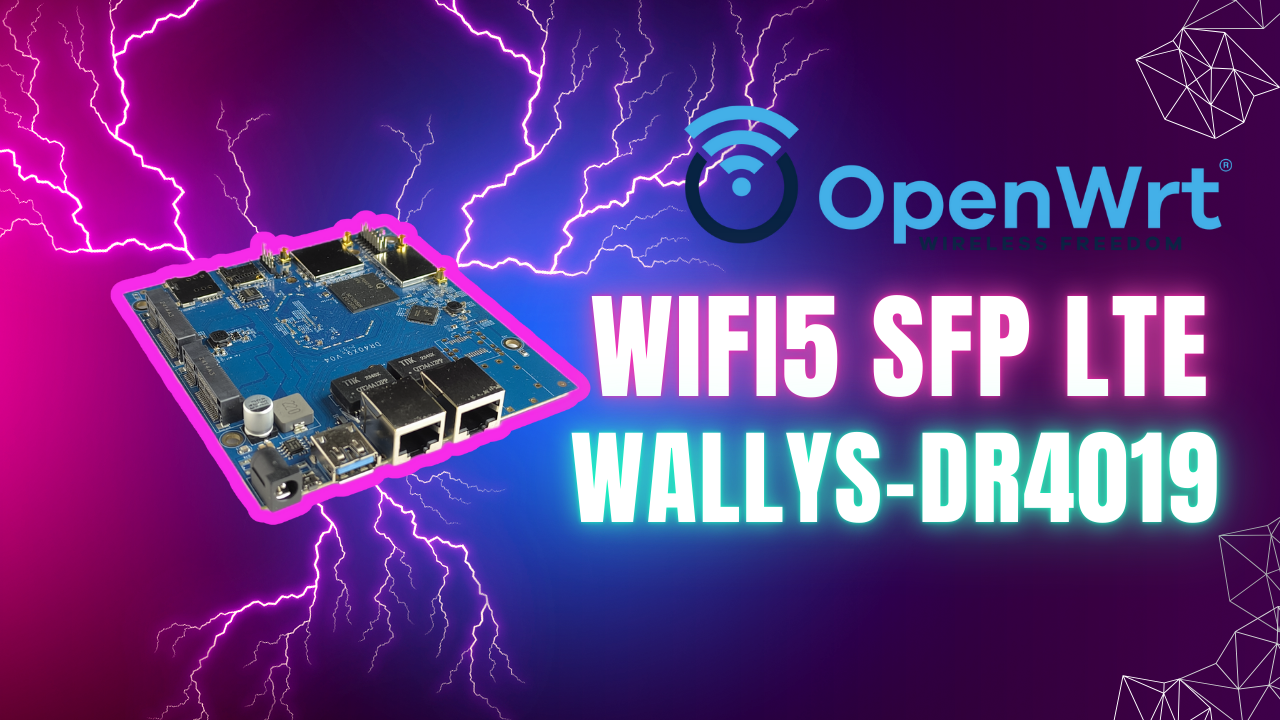Qualcomm IPQ4029 vs. IPQ9554: Performance, Features, and Use Cases

Qualcomm IPQ4029 vs. IPQ9554: Performance, Features, and Use Cases
Choosing the right chipset is essential for high-performance industrial and enterprise Wi-Fi solutions. Qualcomm’s IPQ4029 and IPQ9554 each bring unique strengths to Wi-Fi networks, particularly for environments with varying density, throughput, and stability needs. While the IPQ9554 is known for its cutting-edge performance, the IPQ4029 remains a reliable and mature choice for stable, industrial-grade networks. In this article, we’ll compare their performance, features, and ideal use cases, along with Wallys products designed around each chipset.
Overview of Qualcomm IPQ4029 and IPQ9554
Performance Comparison
The Qualcomm IPQ4029 is a mature and widely trusted chipset for industrial use. Its quad-core ARM Cortex-A7 CPU at 717 MHz offers efficient, stable performance for environments that prioritize reliability over peak speeds. Supporting Wi-Fi 5 (802.11ac) with dual-band capabilities, the IPQ4029 provides a maximum data rate of 1.7 Gbps. It’s particularly well-suited to industrial and enterprise environments where consistent connectivity and robust performance are key, making it a popular choice in sectors that require long-term stability.
In contrast, the IPQ9554 offers high-end performance for demanding applications. With its quad-core ARM Cortex-A53 CPU clocked at 2.2 GHz, Wi-Fi 7 support, and tri-band capabilities, this chipset is designed for environments with high data demands and dense device populations. Its 10 Gbps data rate capacity and multiple 10 Gbps Ethernet ports make it ideal for enterprise environments where speed, capacity, and scalability are top priorities.
Wallys DR4019 Embedded Board Featuring the IPQ4029
The Wallys DR4019 Embedded Board is an excellent example of an industrial-grade solution based on the IPQ4029. This board supports dual-band Wi-Fi 5 with MU-MIMO capabilities and includes LTE support, making it a versatile solution for both enterprise and industrial applications. Its proven stability and reliability in various field deployments make the DR4019 ideal for businesses looking for a cost-effective yet solid Wi-Fi solution. This board has become a trusted choice for industrial applications where consistent performance is essential.
For inquiries and more information on the DR4019, contact Wallys at: sales1@wallystech.com.
Key Features and Connectivity Options
IPQ4029: Known for stability and reliability, this chipset supports 2x2 MIMO Wi-Fi and includes 1 Gbps Ethernet connectivity, providing sufficient speed and coverage for typical industrial and medium-sized enterprise environments.
IPQ9554: With Wi-Fi 7 support and advanced tri-band operation, the IPQ9554 delivers up to 10 Gbps and offers both 10 Gbps and 1 Gbps Ethernet ports, making it suitable for high-density enterprise networks and industrial IoT applications requiring extensive bandwidth.
Wallys DR9574 Embedded Board Featuring the IPQ9554
For advanced applications needing the latest in Wi-Fi technology, Wallys offers the DR9574 Embedded Board featuring the IPQ9554 chipset. The DR9574’s tri-band Wi-Fi 7 support, multiple M.2 slots for modular expansions, and 10 Gbps Ethernet ports allow it to meet the demands of high-traffic, high-density environments. This board is particularly well-suited for enterprise-level networking and industrial applications that require both scalability and robust performance.
For procurement and project consultations for the DR9574, please reach out to Wallys at: sales1@wallystech.com.
Use Cases for IPQ4029 and IPQ9554
IPQ4029: Ideal for industrial IoT, manufacturing, smart building applications, and smaller enterprise networks. It provides stable, consistent performance for applications that prioritize connectivity reliability and operational stability over cutting-edge speed.
IPQ9554: Suitable for high-density enterprise networks, large office spaces, public venues, and high-demand industrial IoT networks. Its high throughput and advanced connectivity make it well-suited for applications requiring substantial data processing, such as streaming, large-scale IoT data aggregation, and other data-intensive tasks.
Conclusion: Choosing Between IPQ4029 and IPQ9554
While the IPQ9554 brings top-of-the-line features with Wi-Fi 7 support and exceptional throughput, the IPQ4029 remains a proven, stable solution that’s ideal for industrial and reliable enterprise applications. The choice between these chipsets should be based on your network’s specific needs—whether it’s the stability and affordability of the IPQ4029 or the high performance and scalability of the IPQ9554.
With Wallys’ DR4019 and DR9574 embedded boards, businesses can select a solution that matches their unique demands, from stable industrial-grade performance to the latest in Wi-Fi 7 technology.
Explore the Wallys DR4019 and DR9574 Embedded Boards
DR4019: Powered by Qualcomm IPQ4029, offering reliable Wi-Fi 5 with LTE support for stable industrial applications.Learn more about the DR4019
DR9574: Powered by Qualcomm IPQ9554, equipped with Wi-Fi 7 and high-speed Ethernet for enterprise and high-density applications.Learn more about the DR9574
For inquiries, reach out to Wallys at: sales1@wallystech.com.










评论